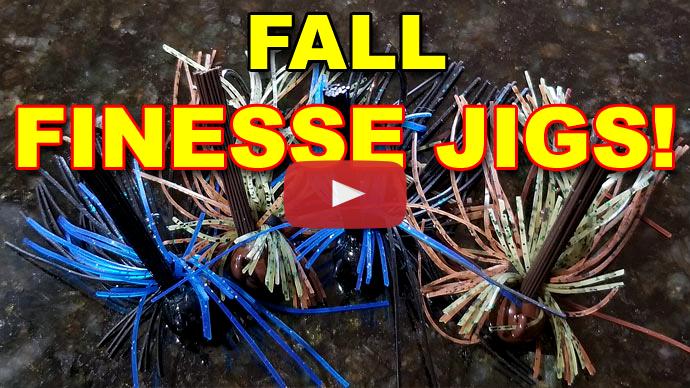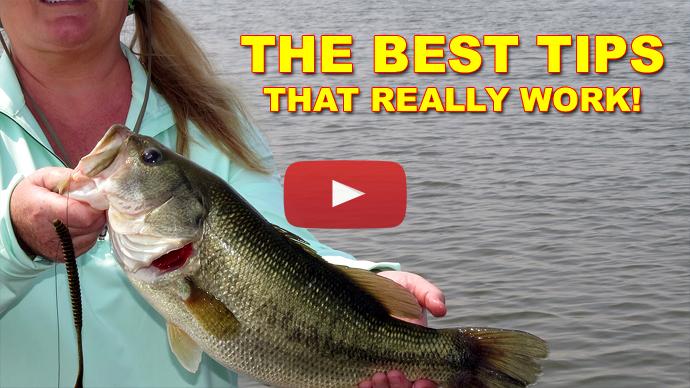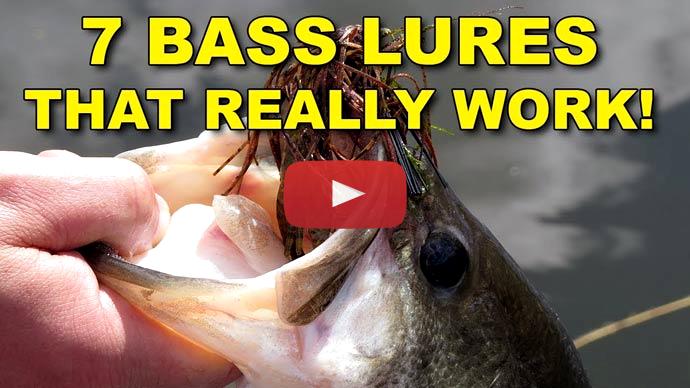Glenn: How do you like that? A finance jig. A little finesse jig. Come here, you. There we go. Come here, you. Give me your face. Look at that, right on the roof of the mouth. Finesse jigging.
Hey folks, Glenn May here with BassResource.com. And today, I wanna talk to you a little bit about finesse jigs.
Okay, so with finesse fishing, that conjures up an image of light line fishing with spinning tackle. And you're right, that's what I have here. This is a 7-foot, medium power, fast-action rod. It's got a lot of tip to it, a lot of give. And you're gonna need that because you're fishing a light line. And traditionally, finesse jigs have a light wire hook.
So the key about this with the reel here is it doesn't matter too much about the gear ratio on it. Because you're not fishing it fast, so you don't need a high-speed reel. What I'm most interested in is a nice, smooth drag. Make sure you get yourself a reel that's got a real good drag system in it that's nice and...see, nice and smooth. That's what you want when you're fishing these jigs because when the fish is pulling and fighting on you, you gotta let the rod and the line all work together with the drag so you don't break anything.
And guys, don't be afraid to downsize to 6-pound test. You know, I used 10-pound for a long, long time, I was real nervous about it. I was afraid of breaking off and losing fish. After a few years of doing that, I finally got up the courage to try 8-pound tests. Ooh, big step. And I thought for sure I'd be breaking off more fish or having to tie a lot more often because the line just can't handle it. Well, I got enough confidence over that over the years where none of those issues actually surfaced. I'm telling you guys, 6 pounds, 6.2-pound line, once you work yourself up to it, if you can use 6-pound, that's definitely gonna make a big difference.
There we are. Little guy, he thinks he's big. That'll work. Couldn't stand my little finesse jig. See that? Right on the roof of the mouth. Little guy but they're fun.
All right, so that was finesse fishing, traditional style. Spinning gear, open-water. Now I wanna show what I do with finesse jigs, a little bit different than maybe some people think. And that's basically what I would normally do flipping and pitching with jigs but I lighten up a little bit and I fish a little bit different cover.
There we go!
Keri: Woa! Hello. Doorbell
Glenn: Ooh!
Keri: Good Fish.
Glenn: Ho ooh. Come here you. Come here. Come here baby.
Keri: That’s a nice fish.
Glenn: There we go!
Keri: Big fatty!
Glenn: Has grass in his face. I’m tell ya, if you don’t think finesse jigs catch good fish, there you go. He ate that thing. Look at that. Nice. Look at the gut on that fish.
Keri: He’s been eatin’
Glenn: Let ya go on this side.
So first of all, what we're doing here is I'm using, instead of...you know, a traditional flipping outfit would be, you know, a flipping rod that's heavy action, long, with stout 50-pound, 65-pound braid, something like that. We're gonna lighten up a little bit in the true sense of the finesse. This is a medium-heavy, 7-foot, medium-heavy action rod. It's a little bit lighter action. Here I'm using Seaguar 20-pound flipping line. Actually, it's 25-pound flipping line. It's fluorocarbon. And the big reason for that...and I'll get to that in just a second but that's what I'm using.
And then the reel, I'm not so much interested in the speed on the reel as I am the drag. This has about 16, 15 pounds of drag on it. Real strong reel, that's what you need for flipping and pitching. And I'm just using, you know, a 1/2 ounce finesse jig in this case, you know. It's very similar to the one I just had but a little bit bigger, right?
So that's the setup. We're not doing spinning gear anymore, we're heavying up a bit. But it's not the full flipping and pitching rig like you would think in the traditional sense. The reason being is, you know, this is a nice, small, compact bait. And the traditional flipping jigs, they're big, they're bulky. And they have, you know, big trailers on them. Great when the fish are buried up in the cover and you need to dig 'em out and you need a lot of bulk to do that and get their attention and the fish are actively feeding.
Finesse jigging comes in style or comes into play when the fish, the bite is off. They're not really chasing baits, they're not actively smacking your lure as it's falling down, you know, down in cover. The other thing is when you're flipping and pitching, you bring your boat right up on top of the cover and you're just in pitching distance, maybe 6, 7 feet away, right? Or pitching a little bit further away, you know, so flipping, pitching, you're only, at the most, maybe 20 feet away. That's a really long pitch. Most people are a lot closer than that, 10 to 15 feet away. In this case, what we're doing is I'm taking the boat and I'm positioning it off away from the cover and I'm pitching it to the edge of the cover. You wanna pull off away. You don't wanna get a 20-foot boat right on top of the fish when they're real finicky. That can scare 'em off. So in this case, we'll pull away from the cover.
Again, we're using the fluorocarbon line because braid...you know, if the fish are real finicky, it's a real slow fall, you're moving it slightly on the bottom, slow movements. You're giving the fish time to examine your bait and then the whole setup. And braid, you can't hide it. Braid just looks unnatural. Fluorocarbon has less visibility, it's a low-vis line, it's less apt to look unnatural to the fish. Twenty-five pound because we're still throwing it real close to cover or just on the inside of it, right on the edge, you know, cover like you may see in the background here, bushes, flooded timber, things like that. You are just not throwing it into the heavy cover and right in the midst of it, like you would with 50, 65-pound braid. I hope that makes sense.
Anyway, that is the different ways to fish a finesse jig. I hope those tips help. For more tips and tricks and for the answers to all your questions about bass fishing, visit BassResource.com.



